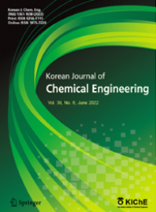Overall
- Language
- English
- Conflict of Interest
- In relation to this article, we declare that there is no conflict of interest.
- Publication history
-
Received September 8, 2023
Accepted November 23, 2023
-
 This is an Open-Access article distributed under the terms of the Creative Commons Attribution Non-Commercial License (http://creativecommons.org/licenses/bync/3.0) which permits
unrestricted non-commercial use, distribution, and reproduction in any medium, provided the original work is properly cited.
This is an Open-Access article distributed under the terms of the Creative Commons Attribution Non-Commercial License (http://creativecommons.org/licenses/bync/3.0) which permits
unrestricted non-commercial use, distribution, and reproduction in any medium, provided the original work is properly cited.
Most Cited
Atomically Dispersed Fe–N–S-Doped Carbon as an Effi cient Li–S Battery Host for Capturing Polysulfi des
Abstract
Lithium–sulfur batteries (LSBs) have emerged as promising candidates for advanced energy storage systems, due to their
remarkable theoretical capacity of 1675 mAh g −1 and specifi c energy density of 2600 Wh kg −1 , surpassing those of conventional
Li-ion batteries. The abundance and cost-effi ciency of sulfur make LSBs attractive in further. However, practical
applications of LSBs face challenges such as the insulating nature of sulfur, migration of soluble lithium polysulfi de (LIPS),
and sluggish redox kinetics. Carbon-based materials have been explored to circumvent these barriers; however, their weak
physical interactions limit their eff ectiveness. Heteroatom doping has shown the potential for anchoring LIPS; but optimization
remains a challenge. In this study, we introduce a novel approach involving the synthesis of uniformly dispersed iron
on activated carbon (AC, Ketjen black) as a support, yielding a single iron–nitrogen–sulfur-doped carbon (Fe–NSC) composite.
This composite exhibited the following advantages as an LSB host: superior dispersion of the Fe catalyst, induced
high surface area, and an increased proportion of Fe 3+ , which led to improved catalytic activity. These properties result in
enhanced polysulfi de capture and stable rate performance in the Fe–NSC-based LSBs.

